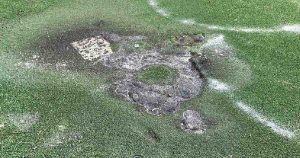Any resident who has lived in the district for some time has seen many changes in the visual landscape; from orchards to open paddocks or simple farm cottages to the large residential estates but what of the fence that divides the viewer from what is behind?
The popularity of horses has given us the sawn timber or recycled plastic stock yard, stretching into the distance and dividing the open space into manicured rectangles. Or the hedges that hide those behind from prying eyes and interfere with the long vistas so valued by visitors and banned in some shires.
There was a time when a proud orchardist was keen to show the way he maintained his trees and an afternoon in the sulky to inspect the neighbours efforts was a way of keep everyone up to the mark. The front fence was a Herculean effort by a skilled woodsman who built a post and rail fence of split timber. The corner posts were strainers, a foot or more through, cut from the local white mahogany or iron bark and morticed to take the split rail. The rails were ten feet long, split from the iron bark and a good handspan wide. These were chamfered in pairs and morticed through the intermediary smaller posts, also split from the chosen timber. There was always debate about the best timber for each part of the fence.
The painting by Miss Calov shows a spot in Geelan’s Road in about 1910, there was obviously no shortage of large trees when it was constructed. There are still some remnants of the early fences, so have the children keep their eyes out so they may see just how hard the early settlers had to work.








